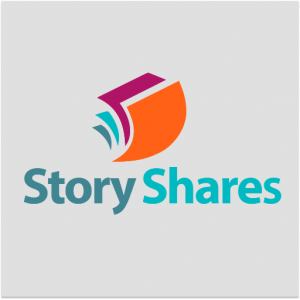USING ADAPTIVE TECHNOLOGY TO INCREASE SCIENCE COMPREHENSION
REIMAGINE NEWSLETTER: ISSUE 18
Consider the amount of text you’ve encountered today: signs, instructions, emails… this article. Imagine not being able to read any of it.
For the 774 million teens and adults globally who lack crucial literacy skills, this is an everyday reality. In the US alone, 70% of high school students need some form of reading remediation. Of these, 20% haven’t developed even basic reading proficiency by graduation.
Students in low-income communities, ethnic minorities, English Language Learners, and those with disabilities all suffer from low literacy skills at especially high rates. In fact, only 13% of African-American and 16% of Hispanic-American 4th graders score at the proficient level in reading. Low literacy skills not only limit opportunities, they also create a cycle that is hard to break, impacting global rates of incarceration, health problems, poverty, and gender inequality.
And here’s the extra tricky part: it is entirely impossible for someone to become a stronger reader if they don’t spend time practising. One must read in order to improve one’s reading skills.


Louise Baigelman
Executive Director
Story Shares.
What we know to be true about reading – for all people – is this: we read things that interest us. We engage deeply when we care about the topic, when we connect with the characters, when the content feels relevant to us, in some way. This creates a fundamental problem for teen and adult illiteracy: how do these older readers improve their literacy skills? We know they need to practice reading… But with what?
When we think about learning to read, we typically think about children. We teach reading to children. We provide children with a wide range of intriguing books, which increase in level alongside them as they increase in age.
But what about all those who graduate from 4th grade, or from high school, without having become proficient readers? How do they then learn to read, now that they are no longer children, but instead, teens and adults?
Imagine a 19-year-old reading at a third-grade level. He needs to read to improve his skills. But what choices does he have for books that he is able to read? The books written at a third-grade level are for third graders! And since, at 19, he is not interested in the same things as third graders; books like Curious George are uninteresting and completely irrelevant to him. But the books with topics and characters intended for teenagers are too hard. Where can he and the 774 million people like him find a range of great books that they can choose from, to practice their reading?
Unfortunately, more often than not these readers get lost between the shelves that currently exist: books they want to read, but which are too difficult, and books they can read, but which are uninteresting and embarrassing. This lack of choice leaves them feeling overlooked and unmotivated. They often stop reading altogether, perpetuating their skill deficit. And who can blame them? The rest of us would probably stop reading too.
How do we break this cycle? How do we turn hesitant and disinterested readers into confident, fluid ones?
Our solution began as an experiment: could we provide struggling teen and adult readers with new books to choose from that would motivate them to spend time reading? Better yet, could we create the kinds of books needed: ones that are meaningful and relevant but written at lower reading levels? To test this, we designed a writing contest: we crafted guidelines, built a simple book-creation tool, launched an awareness campaign, offered prizes, and called for submissions.
The results from this experiment were so compelling that our organization – Story Shares – was born. In just four months, we received 600 story submissions! Our follow-up research shed light on the quality of these new books, which received high praise from teachers, publishers, literacy experts, and readers themselves for their appeal and accessibility. Based on the results from surveys and focus groups, our team selected an initial batch of 50 stories to edit, format, and publish as our inaugural library collection.
Since then, we have run two additional writing contests and have received over 3,000 story submissions. We continue to curate, revise, and highlight content internally, ensuring that readers can hone in on the best books for their age, interests, and level. Our current library includes 400 of the best stories, which have collectively been read over 200,000 times. Registered users on our platform include readers, teachers, and writers from all 50 states in the US and over 80 countries around the world. Recent data show as many as 20,000 unique site visitors a month, with numbers continuing to increase across the board.
Our ongoing school pilot studies provide us with promising early results around engagement and impact. We assess readers’ behaviors and attitudes when using Story Shares versus their traditional choices, measuring both time spent reading and reported feelings around it. With access to Story Shares during independent reading time, over 85% of these students read for more than twice as long, spend less time ‘off task,’ and report more positive associations with books.
We have learned that yes, we can build a collection of these books. Really, really good ones. Books that engage older struggling readers, books they love to read! And actually, we can do so in a remarkably efficient and low-cost way: simply by tapping into the existing community of writers and crowdsourcing stories. With a bit of guidance, awareness, and incentives, writers can and will build this library for the readers who need it! It’s magical, really.
And so, with Story Shares, we’re able to fill a critical gap in the global library by providing struggling older readers with a shelf entirely of their own. Our collection of books – now known as Relevant Reads – are designed to blend topics and characters that are intriguing and relatable to teens and adults with language and structure that is approachable at a range of levels.
Why is this so important for improved learning outcomes? We know that providing authentic choice creates a sense of ownership over learning. This, in turn, creates a sense of value, from which engagement, the key learning ingredient, is born. Without genuine engagement, information is stored only temporarily, if at all. And reading relies on storing information to make meaning from text. Engagement draws readers in, and deepens learning.
Moreover, providing culturally relevant choices allows students to connect to the text, linking new information to what they already know. Having a familiar starting point creates both interest and assurance, a more stable place from which to face new learning tasks. It anchors. It engages. When learning begins with the individual student – what they care about, what they know, what they want to learn more about – the student feels more inherently involved. This provides them with a reference point for learning (Ah, I know about this!), which breeds confidence, and a sense of anticipation (tell me more!), which breeds excitement. Together, these create an ‘I can’ and an ‘I want to’ mindset that ultimately results in a deeply engaged learner.
This intersection is critical for improved learning outcomes, and is why we’ve modelled our Relevant Reads collection in the same way. By developing books that make students feel both connected and confident: books they can read, and want to read, we can effectively ensure that in fact they will read, and in turn, read better. In this way, we are working to fundamentally alter the literacy landscape: to create a positive cycle, leaving no reader behind.

